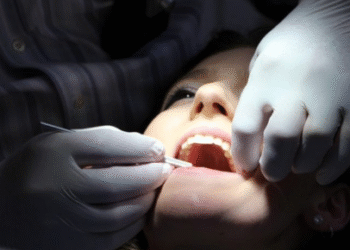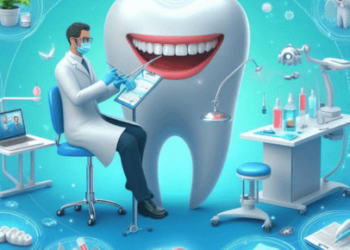A sinus lift, offered by specialists at Van Nuys Dentistry, also known as a sinus augmentation, is a surgical procedure used to increase the amount of bone in the upper jaw, typically to prepare it for dental implants. The procedure involves lifting the membrane that separates the sinus cavity from the jawbone and filling the space with bone graft material.
Types of Sinus Lift Procedures
There are several types of sinus lifts, including:
- Open sinus lift: Traditional method with a larger incision in the gum tissue to access the sinus cavity.
- Closed sinus lift: A minimally invasive technique with a smaller incision and less tissue disruption.
- Balloon sinus lift: Uses a balloon to gently lift the sinus membrane and expand the sinus cavity.
- Internal sinus lift: Performed through a small incision inside the mouth, with minimal external scarring.
- External sinus lift: Involves a larger incision outside the mouth, typically used for more complex cases.
- Piezoelectric sinus lift: Uses ultrasonic vibrations to gently lift the sinus membrane and minimize tissue damage.
- Hydraulic sinus lift: Employs a hydraulic system to lift the sinus membrane and expand the sinus cavity.
Benefits of sinus lift
The sinus lift procedure offers several benefits. The procedure:
- Allows for stable dental implant placement.
- Enhances the chances of successful dental implant integration.
- Restores natural biting and chewing abilities.
- Improves self-esteem by imparting a healthy smile
- Provides a permanent solution for dental implant placement.
- Enhances overall oral health by restoring chewing function.
- Eliminates discomfort or pain caused by missing teeth.
- Helps prevent surrounding teeth from shifting or becoming loose.
- Restores natural speech patterns and articulation.
- Improves the appearance of the smile and overall facial structure.
- Restores natural biting and chewing forces.
- Helps prevent gum recession and bone loss.
Sinus lift procedure
The sinus lift procedure typically involves the following steps:
- Consultation and planning: Evaluate the need for a sinus lift, assess the sinus cavity, and plan the procedure.
- Anesthesia and sedation: Administer local anesthesia and sedation (if needed) to ensure patient comfort.
- Incision and access: Make an incision in the gum tissue to access the jawbone and sinus cavity.
- Membrane elevation: Gently lift the sinus membrane to create space for the bone graft.
- Bone grafting: Fill the space with bone graft material, which can be:
- Autograft (patient’s bone)
- Allograft (donor bone)
- Xenograft (animal-derived bone)
- Synthetic bone substitute
- Membrane reattachment: Reattach the sinus membrane to its original position.
- Closure: Close the incision site with sutures.
- Healing and integration: Allow the bone graft to heal and integrate with the surrounding bone (typically 4-6 months).
- Dental implant placement: Place dental implants into the newly created bone foundation.
- Follow-up: Attend scheduled follow-up appointments to monitor healing and implant integration.
Recovery after sinus lift procedure
Sinus lift recovery typically involves:
- Rest: Avoid strenuous activities for 1-2 weeks.
- Pain management: Follow post-operative pain management instructions (pain medication, ice packs).
- Swelling and bruising: Manage with ice packs, elevation, and gentle massage.
- Bleeding: Control with gauze and pressure.
- Sinus pressure: Manage with nasal decongestants, saline sprays, or antibiotics (if prescribed).
- Diet: Follow a soft food diet for 1-2 weeks, avoiding spicy, crunchy, or hard foods.
- Hydration: Drink plenty of fluids to aid healing.
- Follow-up appointments: Attend scheduled appointments to monitor healing and remove sutures.
- Stitches removal: Sutures are typically removed 1-2 weeks after surgery.
- Bone graft integration: Allow 4-6 months for the bone graft to integrate with the surrounding bone.
Final thought
A sinus lift is a highly effective procedure for increasing bone density in the upper jaw, making it an ideal candidate for dental implants. While it requires careful planning and execution, the benefits of a sinus lift far outweigh the risks. If you’re considering dental implants, consult with a qualified oral surgeon to determine if a sinus lift is right for you.










